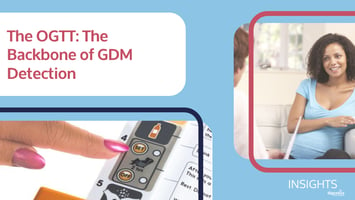Hello and welcome to the first post of Insights - the new Digostics blog! The truth is that the...
Realising Remote Oral Glucose Tolerance Testing - Enhancing Accessibility and Bridging Gaps
 Last week we were delighted to finally reveal the results of our exciting OGTT home testing gestational diabetes (GDM) screening collaboration with University Hospital Southampton (UHS).
Last week we were delighted to finally reveal the results of our exciting OGTT home testing gestational diabetes (GDM) screening collaboration with University Hospital Southampton (UHS).
For those unfamiliar with this project, spring 2023 saw UHS and Digostics announce that expectant mothers in Hampshire were set to become the first, anywhere in the world, to access the gold standard oral glucose tolerance test (OGTT) from the comfort of their own home. This was to be achieved using an easy-to-use test kit, developed by Digostics, called GTT@home.
The GTT@home test kit contains everything the mum-to-be needs to complete an OGTT remotely, including a novel home test device, a preformulated glucose drink, finger prickers and multilingual instructions. On completing the test, the user can immediately share her results for analysis by her care team by scanning a snap-off data fob with their smartphone.
Fast forward to today, and we are delighted to announce that UHS’s implementation of OGTT home testing has been a tremendous success with overwhelmingly positive feedback from expectant mothers and clinical users alike, and with the service yielding maximum user preference scores.
The introduction of GTT@home stemmed from an ambition by UHS to improve the quality of the test and to test in a more patient-focused way. Similarly, to enable testing to be undertaken more quickly so that treatment can be initiated sooner where warranted. Further aims included reducing the number of antenatal appointments required, freeing up valuable resources and improving healthcare equity of access, particularly for at-risk patient groups. The inconvenience the traditional in-clinic OGTT represents, especially for example for those with childcare pressures, means missed appointments and late tests are frequent.
The service’s introduction improved the test’s accessibility at Southampton with all women successfully tested in their target test week. Furthermore, 100% of mothers and maternity staff who responded to user surveys recommended GTT@home over traditional clinic-based testing. 98% returned their test results via their mobile, with 90% finding GTT@home easy to use and no one finding it difficult to use.
Representative user feedback included:
"It was so easy and straightforward to do and I loved that I was able to do it in the comfort of my own home and not have to find childcare!"
"This is a much better and easier way to test. I would definitely opt in again if I have more children."
"Have loved the test and think it's amazing - would highly recommend!"
Improvements in test uptake, quality and reliability, earlier diagnoses and user satisfaction levels, when combined with a significant reduction in OGTT management workload for maternity services, have seen the implementation meet or exceed all agreed success criteria. The full results, together with midwifery, obstetrics and endocrinology commentary on the implementation, can be downloaded here.
So, what's the big takeaway?
Simply put, testing for GDM remotely isn't just an idea or concept anymore but something now being successfully implemented by healthcare providers. And by enabling ladies to do an OGTT at home, we are collectively bridging a huge gap in diabetes detection and taking a giant step towards reducing health inequalities in pregnancy.
Everyone at Digostics extends their congratulations to our partners at UHS for breaking exciting new ground in global diabetes innovation and women’s health.
.png?width=50&name=Headshot%20PSD%20-%20Circular%20(6).png)




Leave a Comment